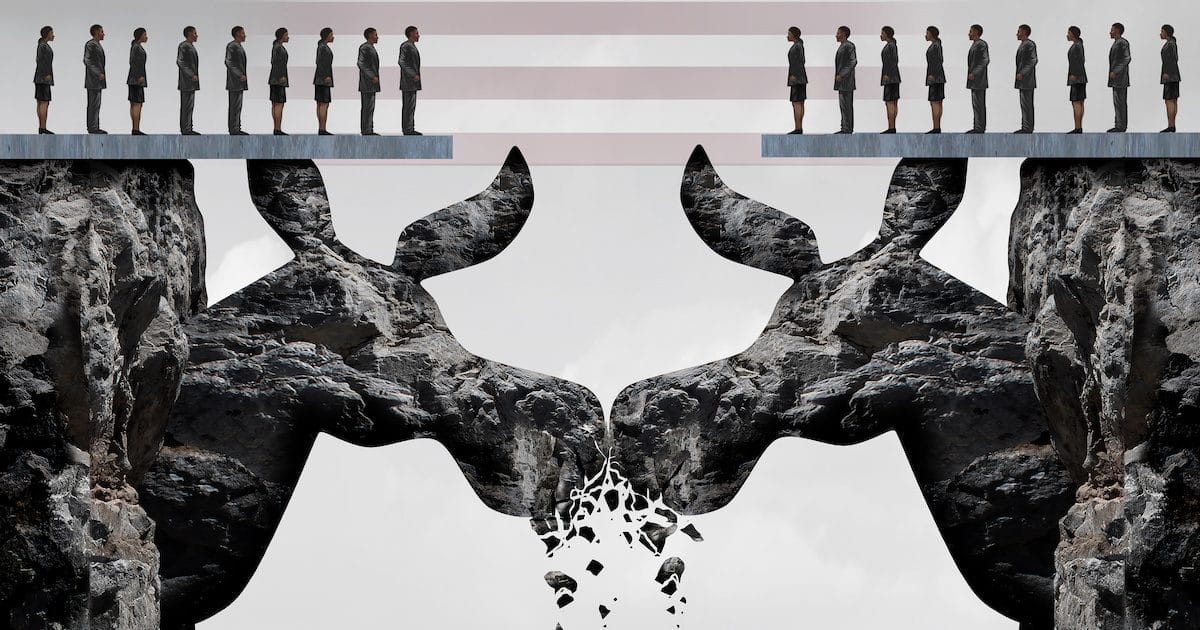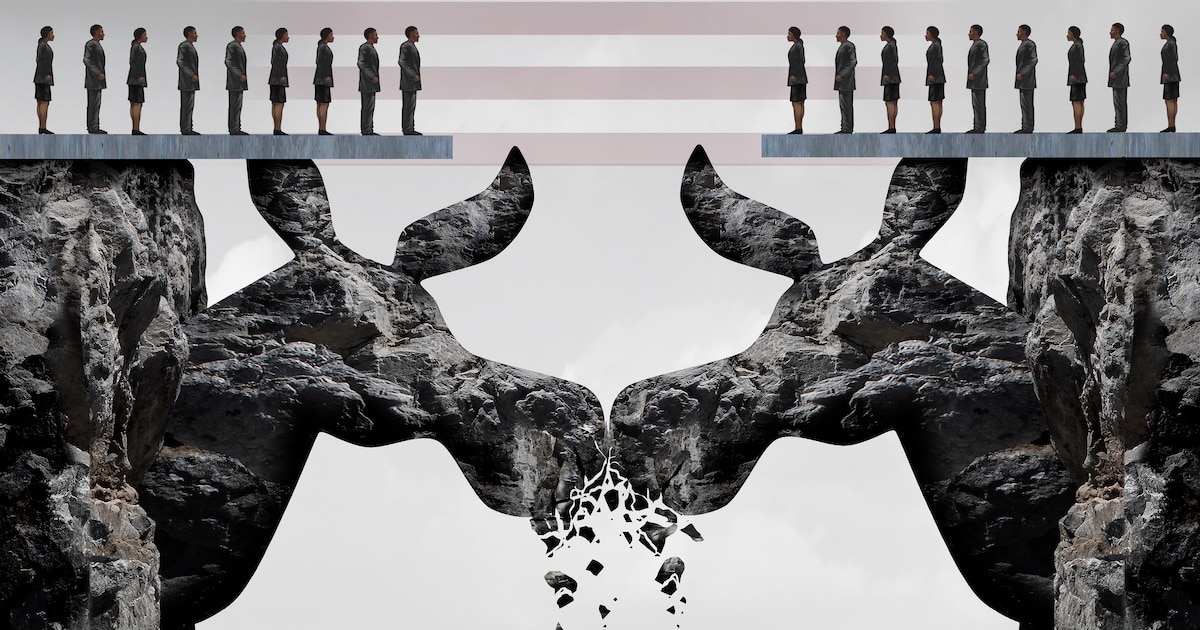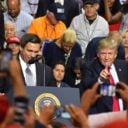
Historically, the Front-Runner Lost the Nomination Nearly Two-Thirds of Multi-Ballot Conventions

With 25 candidates vying to be the front-runner for the Democratic Party nomination, it could be assumed roughly 20 are wasting their time, and their supporters’ money.
Of course, many if not most are primarily building name recognition in anticipation of future bids for higher-office. Some are trying to fill a cabinet slot, or just want to add “former presidential candidate” to their curriculum vitae.
Some of the “also rans” are hoping lightning strikes and they get the vice presidential nod by virtue of their ethnicity, gender, sexual preference or any combination thereof.
However, all that being obvious, there is an underlying dynamic that might not even be apparent to most of these lightning in a bottle-chasers; which, if it were to happen, would be just as big of a shock to them as it would be to the wider political world.
Name recognition is a factor in current front-runner status, and the first debates are lifting profiles. At this point, there is no breakaway leader and Joe Biden’s post-announcement lead is being whittled away. The top five are moving up and down within a 5-point range.
Even if there is a post-debate bump, there is no guarantee it will hold and the poll-positions will not revert to the norm for the trend.
If this happens, a multi-candidate, multi-ballot convention becomes a strong possibility. That’s especially true since the leading candidates have largely regional appeal, which may blunt one candidate’s ability to dominate the field.
If the factions make it difficult for any one individual to secure the necessary number of delegates, then 2020 could well see a “dark horse” nominee. That seems at least likely at this point given the sheer number of factions driven by ideology, electability, ethnicity, sexuality, etc.
The current crop — yes, even the one-percenters — just have to hang in there for the long haul. They need just enough delegates to be ultimately nominated with credibility, no matter how quixotic or embarrassing it might look.
Simply put, history shows that any of the current 25 candidates could get the nomination, even if they are now polling at 1% or less.
Further, convention history shows that when there has been more than one ballot and more than two candidates, the leading candidate on the first ballot fails to secure the nomination nearly two-thirds of the time. That’s true even if they started with a commanding lead and for both parties, though more so Republicans.
Since the founding of both parties, there have been 23 multi-ballot conventions, 15 of which the first ballot leader lost the nomination. The GOP had 9 multi-ballot conventions, of which the leader lost in 7. In the remaining 14, the Democratic front-runner lost in 8.
Even more encouraging for those currently trailing, a number of these conventions nominated “dark horse” candidates. Delegates turned to bring multi-ballot, multi-candidate front-runner deadlocks to a merciful end.
The 1924 Democratic National Convention is the prime example. After 124 ballots, exhausted delegates turned to the unlikely John W. Davis. A small group of supporters doggedly kept his name in nomination and in contention.
The darkest of Democratic dark horses include James K. Polk, the original “dark horse” in 1844, and Franklin Pierce in 1852. The most famous — William Jennings Bryan in 1896 — was only in his thirties, just like Mayor Pete Buttigieg.
Similarly, Republicans nominated Warren G. Harding in 1920 and James Garfield in 1880, both after two leaders deadlocked ballot after ballot..
Being at 1% this far out is hardly an impediment to eventual success. Jimmy Carter was badly trailing the Democratic field at 1%. Yet, he went on to take the 1976 nomination in an eventually uncontested convention. A contested convention is even more of an assist for one-percenters, as history has shown.
For the Republican Party, the first ballot leader received the nomination in just 2 multi-ballot conventions, and lost the nomination in 7.
| Contested Year | Front-runner | Nominee |
| 1856 | Nathaniel P. Banks | John C. Frémont |
| 1860 | William H. Seward | Abraham Lincoln |
| 1876 | James G. Blaine | Rutherford B. Hayes |
| 1880 | Ulysses S. Grant | James A. Garfield |
| 1884 | James G. Blaine | James G. Blaine |
| 1888 | John Sherman | Benjamin Harrison |
| 1916 | Charles Evans Hughes | Charles Evans Hughes |
| 1920 | Leonard Wood | Warren G. Harding |
| 1940 | Thomas E. Dewey | Wendell Willkie |
For the Democratic Party, the first ballot leader received the nomination in 6 multi-ballot conventions, and lost it in 8.
| Contested Year | Front-runner | Nominee |
| 1844 | Martin Van Buren | James K. Polk |
| 1848 | Lewis Cass | Lewis Cass |
| 1952 | Lewis Cass | Franklin Pierce |
| 1856 | James Buchanan | James Buchanan |
| 1868 | George H. Pendleton | Horatio Seymour |
| 1876 | Samuel J. Tilden | Samuel J. Tilden |
| 1880 | Winfield Scott Hancock | Winfield Scott Hancock |
| 1884 | Grover Cleveland | Grover Cleveland |
| 1896 | Richard P. Bland | Williams Jennings Bryan |
| 1912 | Champ Clark | Woodrow Wilson |
| 1920 | William Gibbs McAdoo | James M. Cox |
| 1924 | William Gibbs McAdoo | John W. Davis |
| 1932 | Franklin Delano Roosevelt | Franklin Delano Roosevelt |
| 1952 | Estes Kefauver | Adlai Stevenson |
So, is a Yang/Gabbard ticket or Inslee/Hickenlooper ticket unlikely? History suggests it’s more than possible if the cards fall just right.







Revenant / June 30, 2019
This makes sense, since in a brokered convention, the field has the majority. All those voters/delegates could have chosen the frontrunner – but didnt. Makes sense that they would often coalesce around a non-frontrunner.
The Democrat system makes a brokered convention more likely than the GOP system. But, the superdelegates make a Democrat brokered convention more likely to be resolved quickly, IMO.
In reality, a brokered convention has to be seen as unlikely in any event. Too much pressure will be placed behind the scenes to ensure that the convention is just a big rally with no visible divisions.
/